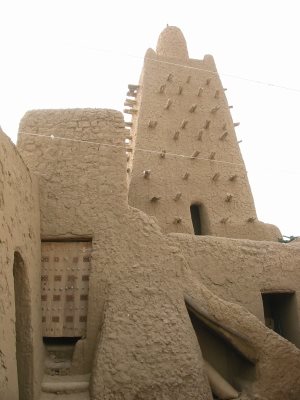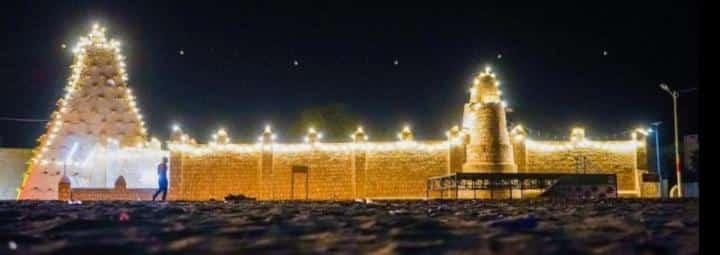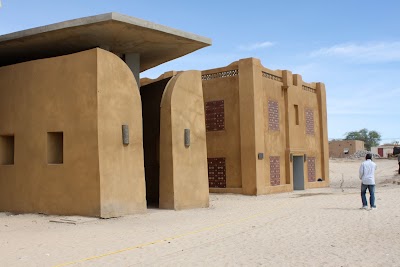Fort of Timbuktu (حصن تمبكتو)
Overview
The Fort of Timbuktu, situated in the Tombouctou Region of Mali, is a remarkable landmark that offers a captivating glimpse into the rich history and cultural significance of one of the world's most legendary cities. Nestled on the southern edge of the Sahara Desert, Timbuktu has long been a focal point for scholars, traders, and explorers alike. It embodies a fascinating blend of African, Arab, and European influences that have shaped not just Mali, but the wider region and beyond.
Dating back to its heyday in the 15th and 16th centuries, the fort stands as a testament to the city's remarkable era of grandeur. During this time, Timbuktu emerged as a major intellectual and spiritual hub under the Songhai Empire. Originally constructed as a defensive structure to protect the city from invasions and internal conflicts, the fort has since evolved into a symbol of resilience and strategic importance in the trans-Saharan trade network.
The construction of the fort is a marvel in itself, showcasing traditional Sudano-Sahelian architectural techniques that employ sun-dried mud bricks and wooden reinforcements. The thick, meticulously crafted walls serve as a powerful reminder of the artisanal expertise of the local people. This architecture not only fulfills functional needs but also harmonizes aesthetically with the arid landscape, standing strong against the harsh Sahara elements.
As you stroll through the fort, you can almost hear the whispers of history carried by the wind. The fortification features lookout towers, battlements, and various defensive elements that provide expansive views of the surrounding desert and the city below. It’s easy to imagine ancient sentinels maintaining vigilant watch over the horizon, ever alert to potential threats.
Timbuktu’s significance extends well beyond its military history. Known globally as the "city of 333 saints," it is home to numerous mosques and mausoleums, several of which are recognized as UNESCO World Heritage Sites. The fort serves as a gateway to these spiritual treasures, offering visitors a starting point for a deeper exploration of the city’s multifaceted history.
One of the most enthralling aspects of Timbuktu is its once-vast libraries, which housed thousands of manuscripts covering subjects from astronomy to medicine and law. While many of these manuscripts have been preserved and hidden in secret locations to protect them from conflict, efforts are ongoing to catalog and digitize these invaluable texts. The fort provides insights into how the city safeguarded its intellectual wealth, adding another layer to its historical narrative.
Tourists visiting the Fort of Timbuktu will find the site to be a place of historical intrigue and cultural richness. Local guides are often available to provide detailed tours, sharing stories passed down through generations. Engaging with these guides adds a personal touch to the experience, allowing visitors to connect more deeply with the fort's storied past.
In recent years, Timbuktu has faced considerable challenges, including threats from armed groups and the impact of climate change. Despite these adversities, efforts to preserve and restore its historical sites have been unwavering. International organizations, alongside local communities, are diligently working to ensure that the fort and other landmarks remain intact for future generations to explore and appreciate.
For those eager to visit, the journey to Timbuktu itself is part of the adventure. Whether arriving by boat along the Niger River or overland through the Sahara, the trip provides a sense of the remoteness and mystique that has captivated explorers for centuries. Upon arrival, the fort is often one of the first landmarks that visitors encounter, setting the tone for a memorable exploration of this historic city.
In sum, the Fort of Timbuktu stands as a compelling monument to the rich history, resilient spirit, and cultural depth of Timbuktu. It invites tourists to not just witness, but to immerse themselves in a narrative that interweaves elements of defense, scholarship, and spirituality. A visit to the fort offers not only a window into the past but also a deeper understanding of the enduring legacy of one of Africa's most storied cities.






